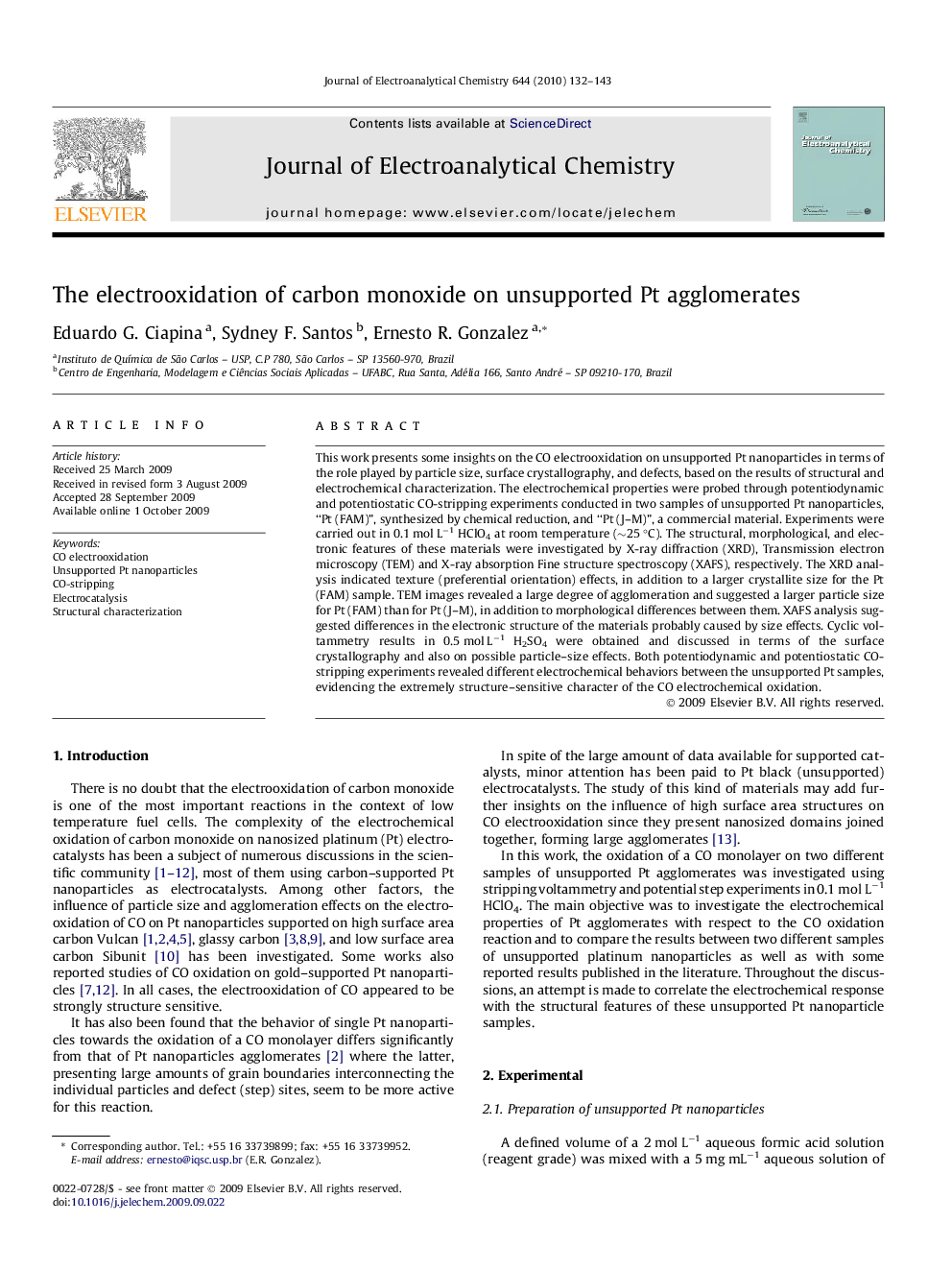| Article ID | Journal | Published Year | Pages | File Type |
|---|---|---|---|---|
| 219908 | Journal of Electroanalytical Chemistry | 2010 | 12 Pages |
This work presents some insights on the CO electrooxidation on unsupported Pt nanoparticles in terms of the role played by particle size, surface crystallography, and defects, based on the results of structural and electrochemical characterization. The electrochemical properties were probed through potentiodynamic and potentiostatic CO-stripping experiments conducted in two samples of unsupported Pt nanoparticles, “Pt (FAM)”, synthesized by chemical reduction, and “Pt (J–M)”, a commercial material. Experiments were carried out in 0.1 mol L−1 HClO4 at room temperature (∼25 °C). The structural, morphological, and electronic features of these materials were investigated by X-ray diffraction (XRD), Transmission electron microscopy (TEM) and X-ray absorption Fine structure spectroscopy (XAFS), respectively. The XRD analysis indicated texture (preferential orientation) effects, in addition to a larger crystallite size for the Pt (FAM) sample. TEM images revealed a large degree of agglomeration and suggested a larger particle size for Pt (FAM) than for Pt (J–M), in addition to morphological differences between them. XAFS analysis suggested differences in the electronic structure of the materials probably caused by size effects. Cyclic voltammetry results in 0.5 mol L−1 H2SO4 were obtained and discussed in terms of the surface crystallography and also on possible particle–size effects. Both potentiodynamic and potentiostatic CO-stripping experiments revealed different electrochemical behaviors between the unsupported Pt samples, evidencing the extremely structure–sensitive character of the CO electrochemical oxidation.
